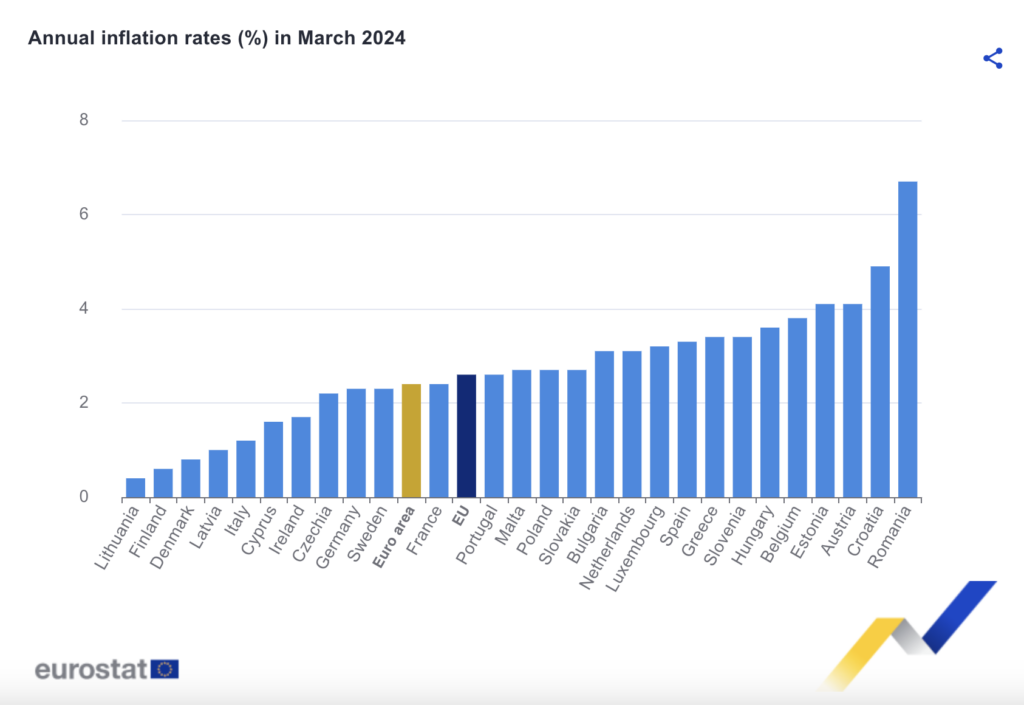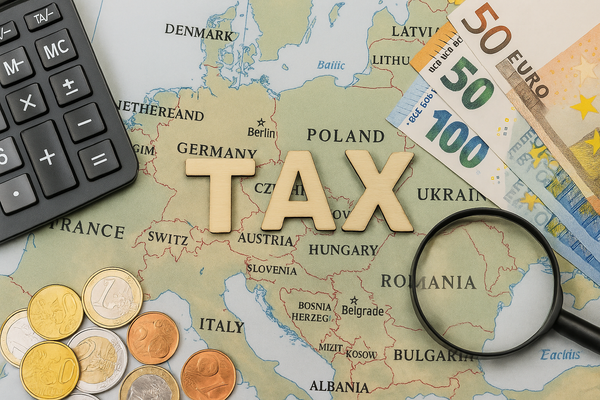
CEE countries register EU's highest, lowest inflation
Lithuania had the lowest annual inflation rate of 0.4% in the EU in March 2024, EU official statistics office Eurostat reports.
The EU’s highest inflation rates were also recorded in Central and Eastern Europe (CEE) countries, with the steepest price increases in Romania (6.7%), Croatia (4.9%), Estonia and Austria (4.1%).
Elsewhere in CEE inflation rates were Hungary 3.6%, Slovenia 3.4%, Bulgaria 3.1% Slovakia and Poland 2.7%, Czechia 2.2% and Latvia 1%.
Annual inflation fell in 13 of the 27 EU member states, was flat in 4 countries and rose in 10. Overall EU annual inflation was 2.6% in March 2024, down from 2.8% in February. A year earlier, the rate was 8.3%.
Inflation in the eurozone was 2.4% in March, down from 2.6% the previous month, significantly down from the 6.9% a year earlier.

Services made the highest contribution to annual euro area inflation (1.76 percentage points, pp), followed by food, alcohol and tobacco (0.53 pp) and non-energy industrial goods (0.3 pp).
Inflation in the eurozone is gradually converging towards the 2% target of the European Central Bank (ECB) on the back of declining energy prices and slowing food price growth, the Economist Economic Unit (EIU) wrote in response to Eurostat’s flash report earlier this month. The EIU said this will likely clear the way for ECB policy rate cuts in June.
With unemployment in the eurozone still at a record low of 6.5% in February, demand-driven price pressures tied to the tight labour markets will support inflation. There are signs that demand for labour is slowing, with a slight reduction in the number of vacancies advertised in 2024.
Core inflation, excluding energy and food prices, remained above headline inflation and well above the ECB’s target at 2.9% in March, driven by services price inflation.

“Services prices are being pushed up by nominal wage growth, which began to cool in the fourth quarter of 2023 but remained elevated by historical comparison, at more than 4%,” the EIU wrote.
“We expect a continued gradual slowdown in euro zone inflation in the second quarter of 2024. With the labour market beginning to cool, we expect services price inflation to begin to ease after remaining elevated at 4% since November 2023,” the EIU wrote.
“We continue to expect that the ECB will keep policy rates on hold at its next meeting on April 11th, before lowering rates in June,” added the EIU, the research and analysis division of The Economist Group, the sister company to the UK’s The Economist.
ECB president Christine Lagarde has repeatedly said that monetary policy easing will only begin when convincing data shows easing wage growth.





